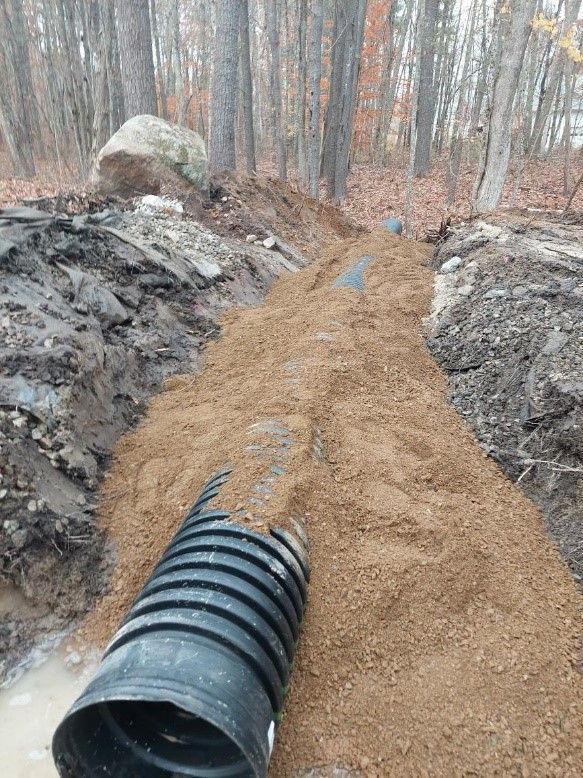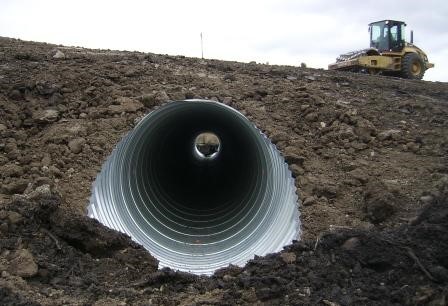Thorough Underbrush Clearing for Land Management
Thorough Underbrush Clearing for Land Management
Blog Article
Grasping Culvert Installation: Increase Your Land Water Drainage Efforts
Effective land water drainage is an important element of effective farming and framework projects. Culverts play a significant duty in handling water circulation and avoiding erosion, making their appropriate installation important. From picking the best materials to applying best practices, understanding culvert setup can dramatically boost the efficiency and long life of your land water drainage system. By comprehending the intricacies of culvert setup, you can maximize your water drainage initiatives and make certain lasting land use practices.
Significance of Culvert Installation
Guaranteeing correct culvert installation is paramount for keeping effective land drainage systems. Appropriate installation of culverts helps to funnel water away from roadways and structures, decreasing the threat of flooding and water damage.
Appropriate Sizing and Positioning

Correct placement of culverts is similarly crucial. Culverts must be placed at the least expensive factor of the location requiring drainage to guarantee reliable water circulation.
Material Choice Tips
Choosing the best products is vital in making certain the sturdiness and functionality of culverts for effective land drainage systems. When selecting products for culvert installment, it is crucial to take into consideration aspects such as the water circulation price, dirt structure, and environmental conditions of the website.
Among one of the most common materials used for culverts is corrugated steel (Tree removal). Corrugated metal culverts are long lasting, economical, and easy to set up. They appropriate for areas with high water flow prices and can withstand hefty tons. Another prominent option is concrete culverts, which supply exceptional strength and durability. Concrete culverts are optimal for areas vulnerable to corrosion or when a longer life span is preferred.
For environmentally sensitive locations, plastic culverts may be preferred. Plastic culverts are lightweight, resistant to deterioration, and simple to transport and mount. They are also known for their smooth inside, which assists to maintain effective water flow. Furthermore, in locations where all-natural visual appeals are important, materials like rock or timber can be made use of to create culverts that blend perfectly right into the surroundings. Ultimately, the selection of product find out need to be based upon a thorough analysis of the particular demands and conditions of the land water drainage project.
Installment Methods and Ideal Practices
Given the crucial importance of material option in making sure the functionality and durability of culverts, the setup strategies and finest methods play an essential role in the overall success of land drainage systems. Correct installation is essential to stopping issues such as leakages, breaks down, or obstructions that can endanger the performance of the culvert.

During installation, care should be taken to straighten the culvert appropriately and supply correct support to stop deformation. Backfilling must be done slowly have a peek at this site and compressed in layers to avoid gaps and negotiation. Correct compaction is necessary to prevent moving or sinking of the culvert over time.

Upkeep and Long-Term Treatment
Implementing a thorough maintenance strategy is necessary for making certain the long life and reliable efficiency of culverts in land drain systems. Routine assessments need to be carried out to check for any signs of damage, clogs, or erosion that could compromise the capability of the culvert. Clearing up particles such as fallen leaves, branches, and debris is important to prevent clogging and maintain the circulation capacity of the culvert. Vegetation control around the culvert location is likewise important to stop roots from triggering structural damage.
Regular maintenance tasks might include cleansing, fixing joints, reinforcing inlet and electrical outlet structures, and ensuring proper slope and positioning of the culvert. Maintaining comprehensive records of maintenance tasks, evaluations, and repair work is vital for tracking the condition of the culvert over time and planning future upkeep needs.
Final Thought
In final thought, understanding culvert installment is critical for efficient land drain. By complying with best methods and carrying out long-term care approaches, landowners can increase their water drainage initiatives and make certain the longevity and functionality of their culverts (Tree removal).
Report this page